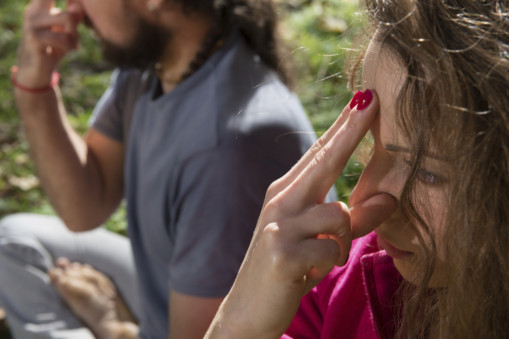
Lady Gaga, Jennifer Aniston and Michelle Williams swear by yoga — and who can blame them. The ancient Indian physical, mental and spiritual disciplines have melted boundaries and are now a far reaching global movement. Known to bring mental peace, according to TWT’s yoga guru and doctor of exercise physiology Bharat Thakur, it is also effective in some instances of heart ailments.
“If you suffer from an extreme heart condition, do consult a cardiologist. However, for cases of mild blockage we can work towards getting rid of it. Yoga is not an alternative to doctors though,” Thakur said. “After a patient has undergone open heart or bypass surgery, yoga can be very effective in his or her after care.”
Thakur outlined the different yoga techniques that work towards improving different heart conditions:
CORONARY HEART DISEASE
It is a condition in which plaque deposits block the coronary blood vessels, leading to a reduced supply of blood and oxygen to the heart. The yoga techniques for this condition are Anulom Vilom (alternative nostril breathing), Kapalbhati (breathing exercise that focuses on exhalation), Surya Namaskar, (sun salutation) which incorporates both breathing exercises, and physical exercises.
ANGINA PECTORIS
It is a chest pain that occurs due to insufficient supply of blood to the heart. Also known as angina, it is a warning sign for heart attack. To prevent the occurrence of angina, stress must be avoided. Asanas, or yoga postures which involve stretching, help activate the stretch receptors which in turn signal the brain to release two chemicals — relaxin and seratonin, which are also called “happy hormones”.
Indhan daud, a combination of body movement with intense breathing, and Pavanmuktasan, a yoga position that helps remove apan vayu or unwanted hair,also helps.
CONGESTIVE HEART FAILURE
A condition where the heart cannot pump enough blood to the rest of the body, it is commonly known as heart failure. Intense breathing and inverted yoga postures such as Viprit Karani Mudra help in avoiding this condition.
In the case of hypertension, breathing techniques such as Sahaj Pranayam, Anulom Vilom, Bhramari Pranayama and Ujjayi Pranayama are useful.
For the conditions mentioned below, a doctor needs to be consulted.
Cardiomyopathy is the weakening of the heart muscle or a change in the structure of the muscle due to inadequate heart pumping. Some of the common causes of cardiomyopathy are hypertension, alcohol consumption, viral infections and genetic defects.
Congenital heart disease or congenital heart defect refers to the formation of an abnormal heart due to a defect in the structure of the heart or its functioning. It is also a type of congenital disease that children are born with.
Arrhythmias are associated with a disorder in the rhythmic movement of the heartbeat. The heartbeat can be slow, fast, or irregular. These abnormal heartbeats are caused by a short circuit in the heart’s electrical system.
Myocarditis is an inflammation of the heart muscle usually caused by viral, fungal and bacterial infections affecting the heart. It is an uncommon disease with only a few symptoms — such as joins pain, leg swelling or fever — that cannot be directly related to the heart.


